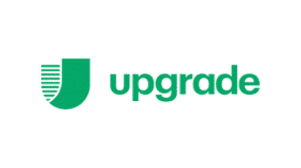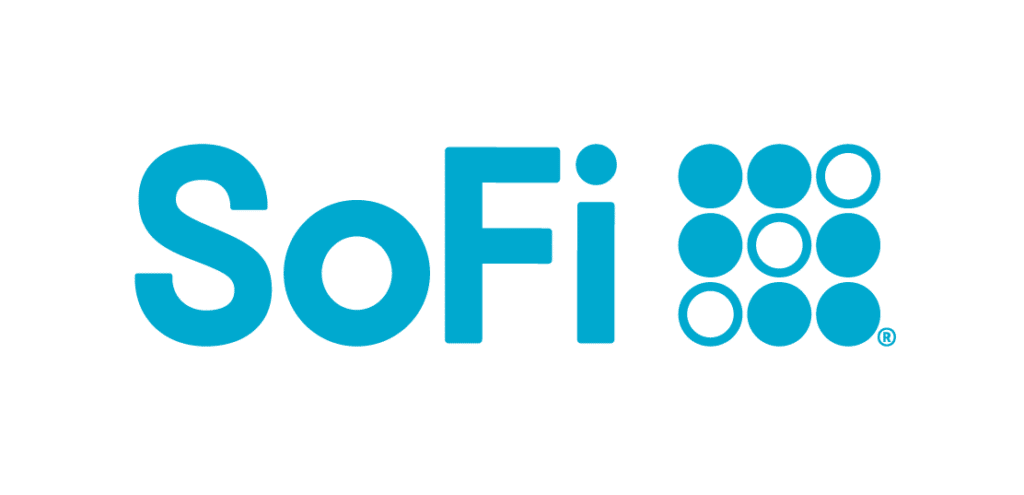Can you afford to pay $400 out of pocket in an emergency? And what about expenses bigger than $400, which could be one medical emergency or burglary away?
That’s where emergency loans come in handy. If you qualify, you can use one to cover the upfront costs of an expensive emergency, then pay back your balance over time.
The Best Emergency Loan Companies
These are the best emergency personal loans on the market. Most are installment loans, but you can find emergency credit lines if you know where to look.
Each online lender on this list does at least one thing really well, whether it’s serving people with limited or poor credit or delivering funds fast when you need them most. Our best overall pick offers the best value for the greatest number of would-be borrowers.

Motley Fool Stock Advisor recommendations have an average return of 618%. For $79 (or just $1.52 per week), join more than 1 million members and don’t miss their upcoming stock picks. 30 day money-back guarantee. Sign Up Now
Best Overall: LightStream
LightStream is the best overall option for emergency personal loans because it has the most advantages — and the most flexibility — for people who need to borrow money fast. Benefits include:
- Long loan terms, up to 84 months (seven years)
- High loan amounts, up to $100,000
- No origination fees
- Low interest rates compared with leading lenders
- Rapid funding, often in just one business day
- 0.50% autopay discount — double the industry standard
Best for People With Limited Credit: Stilt
Stilt is one of the few lenders for people with limited or no credit history. Although it markets heavily to immigrants and noncitizens with U.S. bank accounts, Stilt also makes loans to underbanked U.S. citizens who struggle to qualify for loans elsewhere.
Stilt uses noncredit factors like work history, documented financial behaviors, and educational attainment to assess borrower risk when no credit score is available.
Additional features:
- Can borrow anywhere from $1,000 to $35,000 if you qualify
- 12-month to 36-month loan terms
- Competitive rates and fees, even without a credit score
- Easy online application process
Best for People With Bad Credit: LendingPoint
LendingPoint offers the best emergency loan option for people with bad credit — meaning FICO scores as low as 580, depending on your state of residence. And LendingPoint doesn’t require a hard credit check when you apply, so getting your loan won’t further affect your credit.
LendingPoint also uses noncredit factors to assess borrower risk. That’s useful if your credit history is limited and what history you have results in a low credit score.
Additional features:
- Same-day loan approval for qualified applicants
- Can borrow up to $36,500 if you qualify
- No origination fee if you qualify — otherwise, pay a variable fee up to 6%
- No early prepayment fees
- Potential for a late payment fee waiver if you qualify
Best for People With Good Credit: SoFi
If you have very good or excellent credit, you can’t do better than SoFi for emergency loans. In fact, were it not for SoFi’s strict underwriting protocols — you’ll have trouble qualifying with a FICO score under 700 — it would be a close contender for best overall.
Additional features:
- No origination fees, regardless of credit score
- Can borrow up to $100,000
- Loan terms between 24 and 84 months
- 0.25% autopay discount
- $15 per successful referral, subject to SoFi’s approval
- Defer payments for up to 12 months total over the life of the loan if you become unemployed while paying it off
Best for Fast Funding: Avant
Avant offers rapid emergency loan funding. If everything is in order when it approves the loan, you can expect your funds in as little as 24 hours — compared with two business days or longer for some other emergency lenders.
When hours count — as they often do in an emergency — Avant has your back.
Additional features:
- Can borrow up to $35,000 if you qualify
- Build credit with a credit builder credit card — its $1,000 spending limit is a useful credit line for smaller emergencies
- Potential approval with a bad credit score or impaired credit
- May forgive late fees at its discretion
Best Loan Broker for Emergencies: Upstart
Upstart is one of several loan brokers that collect loan offers from multiple lenders and present them to would-be borrowers like you.
Thanks to its relaxed underwriting standards, which may accept FICO scores down to 600 and consider noncredit factors when your credit history isn’t adequate, Upstart is the best loan broker for emergency loans. Throw in competitive rates and repayment terms, and you’ve got a go-to resource to get multiple loan offers quickly.
Additional features:
- Can borrow up to $50,000 if you qualify
- Terms as long as 60 months
- Some offers fund the next business day, depending on the lender
- No prepayment penalties
- No origination fee if you qualify — otherwise, a variable fee up to 8%
Best for Emergency Credit Lines: Upgrade

Upgrade is the best emergency lender for borrowers seeking credit lines rather than installment loans, though it offers both.
Upgrade’s credit lines work just like regular credit cards. In fact, you get a physical card that you can use in-person and online at millions of merchants. Choose from one of four options:
- The classic Upgrade Card, which doesn’t earn rewards but doesn’t have any draw fees
- The Upgrade Cash Rewards Card, which pays unlimited 1.5% cash back on payments
- The Upgrade Bitcoin Rewards Card, which pays unlimited 1.5% back in Bitcoin on payments
- The Upgrade Triple Cash Rewards Card, which pays unlimited 3% cash back on eligible purchases, including auto, home, and health care
Additional features:
- Credit line between $500 and $25,000, depending on your eligibility
- No origination fees
- Upgrade sets your payoff schedule for better predictability
Methodology: How We Select the Best Emergency Loans
We use several factors to assess emergency loan provider quality and build this list. Each relates to the borrower experience, from application and funding speed to term length and interest rate range.
Application Process
If you’re facing a costly emergency, you need money as quickly as possible. You can’t afford to wade through a multi-week application process that requires extensive back-and-forth between you and your loan officer — if you can even get in touch with them.
That’s why we’re big fans of emergency loan providers with streamlined application processes. Technology enables lenders to maintain strict lending standards without compromising approval speed, and any lender that doesn’t embrace it risks being left behind.
Funding Speed
A fast application does no good if you have to wait days to get your money. We strongly prefer lenders that fund loans quickly — within one to two business days at most, and preferably on the same day they approve the loan. Again, technology makes it possible.
Loan Term Length
Longer-term loans cost more because there’s more time for interest to accrue, but they generally have lower monthly payments than identical loans with short terms.
One isn’t necessarily better than the other — it’s more about your preference as a borrower and what you can afford to pay each month. That’s why we prefer lenders with broad term length ranges.
Loan Amount
Your definition of “financial emergency” depends on how much you can afford to pay out of pocket. That, in turn, depends on your savings balance and income.
But most people have a limit beyond which they can’t afford to cover an emergency out of pocket — at least without raiding their retirement savings or selling their house.
That’s why we prefer lenders with broad loan amount ranges, from small ($5,000 or less) to big ($50,000 or more).
Credit Structure
Most of the credit products on this list are installment loans, which have fixed monthly payments and payoff schedules.
Those work well for many borrowers, but some prefer more flexibility. If you’re among them, an emergency credit line might be a better option. And while we don’t write off lenders that don’t offer credit lines, we prefer those that issue them alongside personal loans.
Interest Rates (Annual Percentage Rate)
Along with its amount and term, your loan’s interest rate is a key determinant of its overall cost. It should be no surprise that we prefer lenders that offer low starting interest rates to well-qualified borrowers.
Loan Fees & Other Expenses
It’s possible to avoid paying fees other than interest on an emergency loan. You just have to find one without other fees, like origination fees, then make your payments on time to avoid late fees.
Clearly, we’re fans of low-fee loans, and we give preference to providers that make it easy to avoid them altogether.
Emergency Loan FAQS
Do you still have questions about getting an emergency loan? These are the answers to some of the most common queries about installment loans and lines of credit for personal emergencies.
How Fast Can You Get an Emergency Loan?
Many emergency lenders offer same-day funding upon approval. Others fund loans within one to two business days of approval, which can stretch the actual funding time out to three or four days if you apply over a weekend.
The application process lengthens the funding timeline further. Some lenders approve smaller loan applications quickly — within hours or a day or two — but others may require more information or have more involved underwriting processes in general.
So the answer varies. But the best emergency lenders get you your money within a couple of days after you send in your application.
What’s the Difference Between an Emergency Loan vs. Line of Credit?
An emergency loan has a fixed loan amount and a fixed loan term. The interest rate and loan term are usually fixed as well.
In short, an emergency loan is predictable.
Emergency lines of credit aren’t unpredictable. It’s more accurate to say they’re more flexible than installment loans. Your line of credit has a fixed maximum borrowing limit (credit limit) and often a fixed interest rate, but you have the option to draw less than the maximum.
In other words, a credit line lets you borrow only what you need at the time. You can make additional draws on your credit line if you need more money as long as you can afford to make the monthly payments. Those payments are typically spread out over a fixed period.
Should You Charge Emergency Expenses on a Credit Card?
If you have access to a 0% APR credit card offer with a relatively high credit limit and you can pay back your charges in full by the end of the 0% APR period, take advantage of it. That’s your best shot at covering the cost of your emergency without dipping too deeply into your savings.
It’s really important that you pay off your balance in full by the end of the promotional period. Otherwise, you could be on the hook for all the interest that would have accrued during the period — likely hundreds or even thousands of dollars more than the initial charges.
If you don’t have access to a 0% APR offer, you should only charge emergency expenses to your credit card as a last resort. The interest rate on your card is likely to be higher than the interest rate on your emergency personal loan, especially if you have good credit.
What’s the Best Emergency Loan Option if You Don’t Want a Personal Loan?
Anyone with a credit history — and sometimes people without one — can qualify for a personal loan if they have adequate income.
But many folks are fortunate to have other options for borrowing larger amounts in an emergency. Some of these options have lower interest rates, higher borrowing limits, or both.
Those options include:
And if you need to borrow a small amount against your next paycheck, consider a paycheck advance app.
Each alternative has its own advantages and disadvantages, but all are worth considering if you’re able. One option you definitely shouldn’t consider is a payday loan. Payday loans are short-term loans with sky-high interest rates that can easily trap you in a cycle of debt.
Of course, the best option is to work on building your emergency fund so you don’t need a loan at all.
How to Choose the Best Emergency Loan
As you weigh your emergency loan options, consider your top priorities as a borrower. Ask questions about:
- How much you need to borrow
- The maximum monthly payment you can afford
- Whether you want an installment loan or line of credit
- How quickly you need the money
- Whether you’ve already charged emergency expenses to a credit card, in which case you may need a debt consolidation loan
Chances are your answers to these questions will help you narrow your list of options to a more manageable size. They might even identify a clear winner.
From there, it’s all about execution. Use the issuer’s website to check your rate and review your loan offers. Choose the offer that makes the most sense for you. Apply for the loan, responding promptly to requests for more information to avoid delaying your application. And prepare to pay off your emergency bills.





